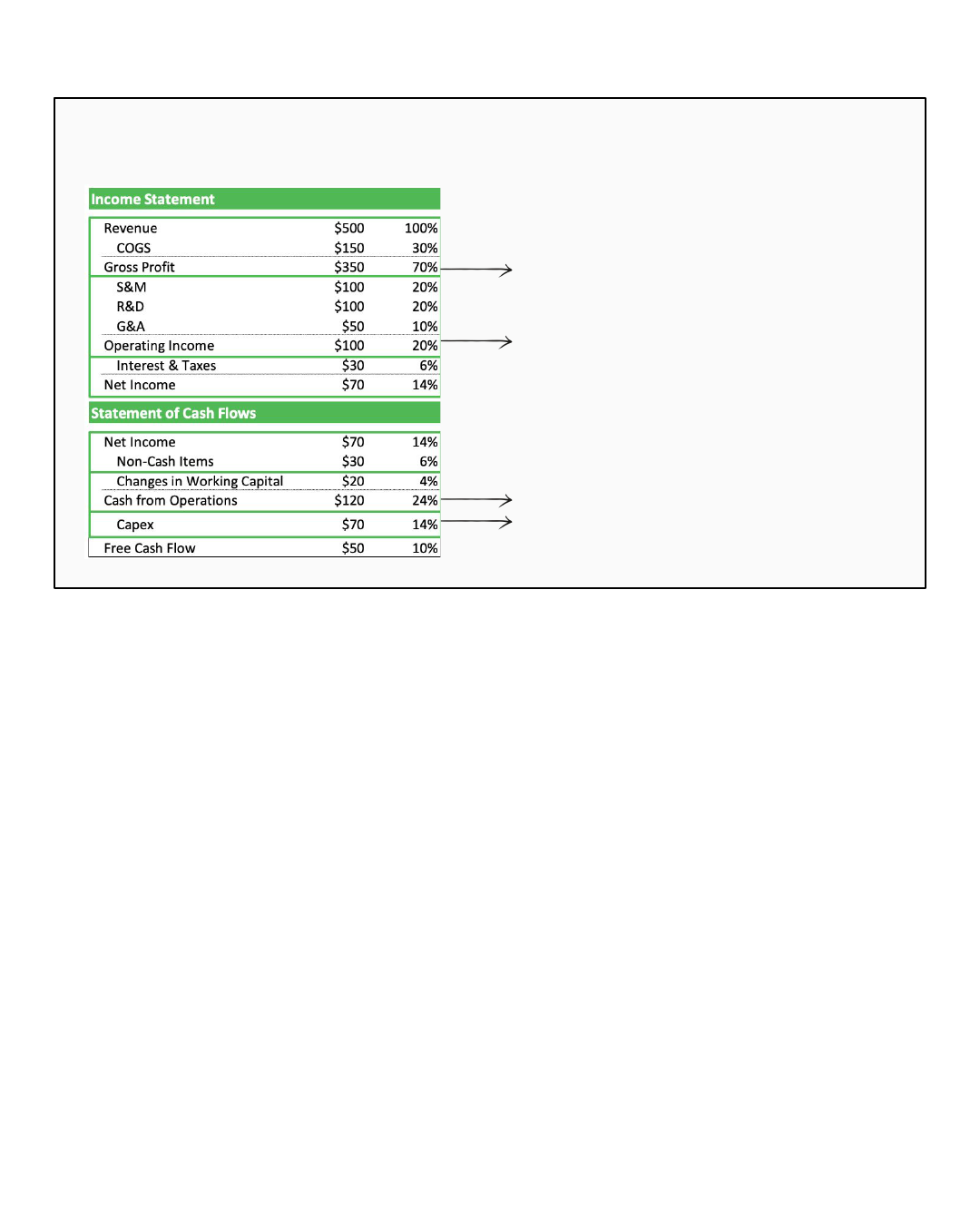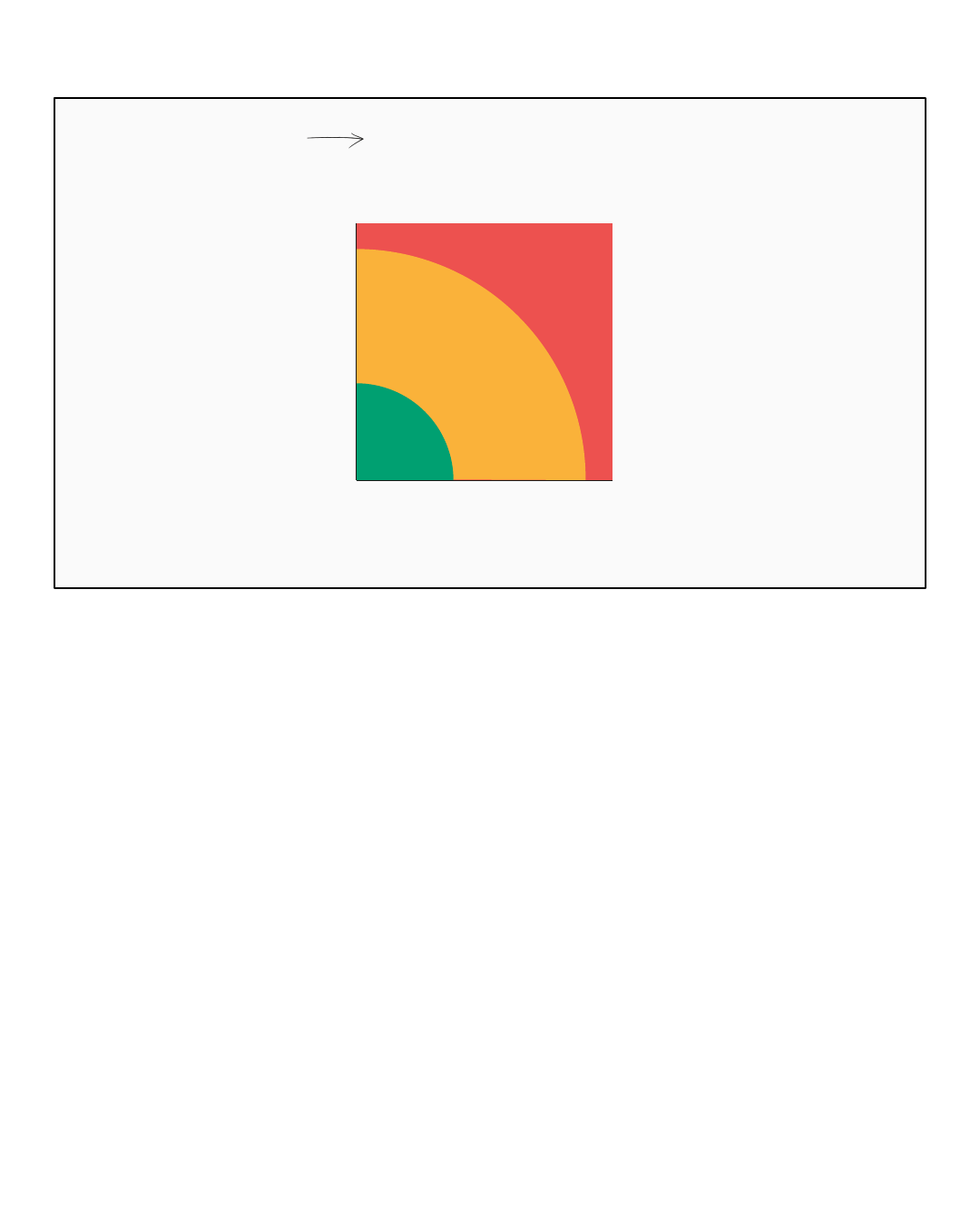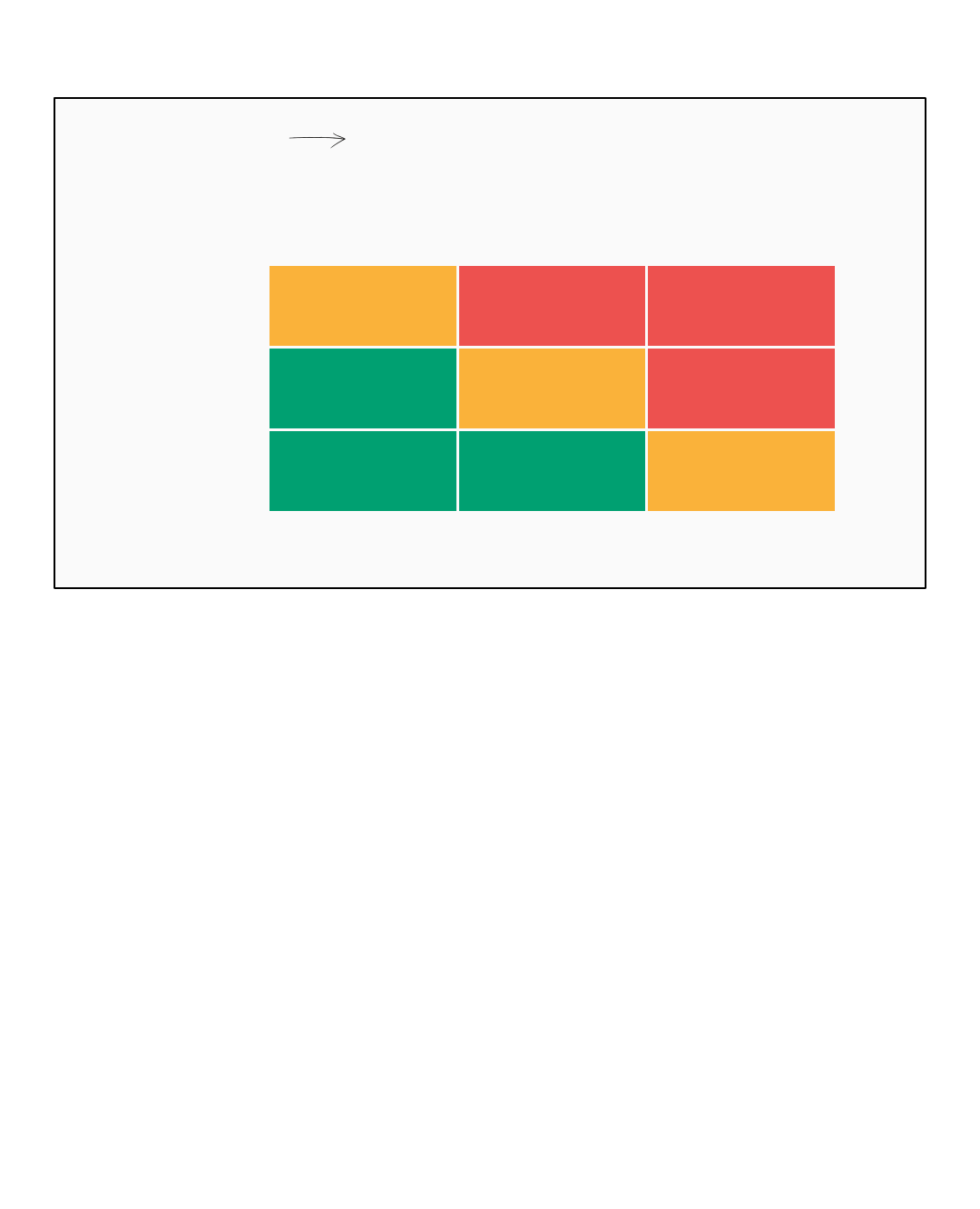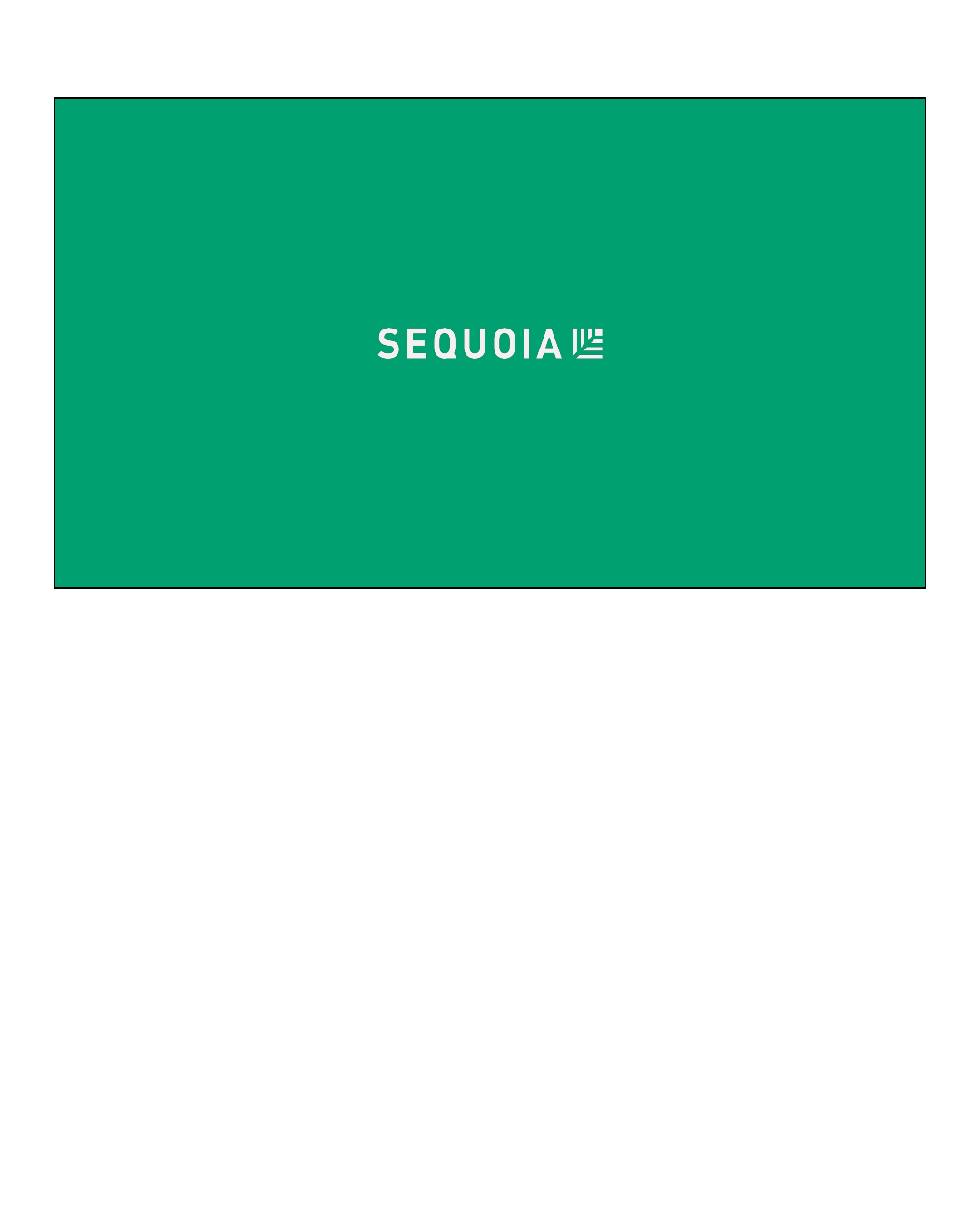
Forecasting & Scenario Planning
PAT GRADY & RAVI GUPTA MAY 2022
● The objective of this presentation is not to give a comprehensive overview of
forecasting and scenario planning. This is tailored specifically to how
forecasting and scenario planning come into play when the world around you
is changing rapidly, as it is at the moment.
● We've been living in an environment of abundance. In an environment of
abundance a rational actor chooses to invest the incremental dollar.
● The challenge is that the world has changed. The thing that worked yesterday
may not work tomorrow, which creates a problem.
● Today we’ll talk about what it means to build a great business, why the world
changing poses a problem, and what we can collectively do about it to set
ourselves on a good path.

What is a great business?
● Most people have an intuitive sense for what constitutes a great product or
what constitutes a great culture, but not for what constitutes a great business.
● This could be because the environment we're coming out of defines a great
business differently than the environment we're heading into.
● One idea that withstands the test of time is that a great business generates
durably high returns on invested capital.
● “Durably high returns on invested capital” boils down into three words…free
cash flow.

SEQUOIA CONFIDENTIAL
In three words…
Free Cash Flow
● Free cash flow is what defines a great business. What it means:
○ Free cash flow for you as an operator means freedom.
○ Free cash flow for your employees or your customers means trust: they
know that the company is going to be around tomorrow.
○ Free cash flow for an investor is the definition of value. If you've ever
looked at a DCF model (a discounted cash flow model), it's what
underlies all valuation.

SEQUOIA CONFIDENTIAL
How does Revenue convert into Free Cash Flow?
● At the top of this slide is revenue and at the bottom is free cash flow.
● In the middle are the four key operating decisions, or operating levers, that
determine how effectively your business can convert revenue into free cash
flow.
● These are things that need to be baked into your product, your pricing, your
packaging, and your distribution model.
● These things weren’t necessarily top of mind over the last years as we were
operating in an environment of abundance. They should be top of mind as we
head into an environment of scarcity.

SEQUOIA CONFIDENTIAL
Atomic Units of Investing
IN WHAT ASSET ARE YOU INVESTING?
● We do not expect early-stage companies to produce free cash flow today. We
do, however, want to encourage you to have a clear line of sight to producing
free cash flow over time.
● One way to do that is to think about the atomic units of investment for your
business.
○ The difference between an investment and an expense is that an
expense yields no future benefit and investment yields a future benefit.
At the early stages, the atomic unit may be the customer unit.
Hopefully that's a very clear investment, where the amount of money
you put in to acquire and serve the customer is less than the amount of
money you get back from the customer.
○ If that’s true at the unit level, you can start to roll that up into the
operating unit. Maybe the operating unit level is the city, maybe it's a
product line, maybe it's a segment, but hopefully over time, the
customer rolls up to the operating unit.
○ The operating unit rolls up to the company and produces free cash flow
at the company level over time.

SEQUOIA CONFIDENTIAL
What does it mean to build a Great Business?
● This is another framing for what it means to build a great business:
○ The story needs to translate into a set of metrics that eventually
produces a set of financials that generate free cash flow. That's the
input.
○ The output is the valuation, which is just the reward for having built a
great business. The causality runs from left to right.

A Path to Free Cash Flow
THE MUST-HAVE:
● To recap this first section:
○ The thing that is critically important in an environment of scarcity, which
we believe we're heading into, is having a clear path to generating free
cash flow that begins at the atomic unit, and rolls up to the company
level.
○ This starts with a story that produces metrics, that produces free cash
flow at some point in time.

What is the problem?
● The environment of recent years has not rewarded a lot of thought around the
path to free cash flow. The environment that we're heading into is going to
demand it.
● That creates a problem.
○ What is the problem, more specifically?

SEQUOIA CONFIDENTIAL
The Tide is going Out
● The tide is going out.
○ This is the total VC money invested market-wide, year by year, for the
last ~25 years.
○ If you go back to 2000 and 2001: the dollars invested in 2000 were cut
in half in 2001, and then they were cut again in 2002. There was about
an order of magnitude drop over a two-year period.
○ 2022 is pacing to look a lot like 2001; 2023 might shape up to look a lot
like 2002. So we believe we are heading into a different environment.

SEQUOIA CONFIDENTIAL
Risk On versus Risk Off
Tide is In: Risk On!
Tide is Out: Risk Off
● When the tide is in, risk is on. When the tide is out, risk is off.
● When risk is on, it means that people are innocent until proven guilty and
investors are willing to buy a dream.
○ When risk is off, it means that people are guilty until proven innocent
and investors want to invest in reality.
● When risk is on, it means that growth is rewarded and the incremental dollar
spent on sales and marketing is a good investment.
○ When risk is off, it means that people reward profitability and it's a good
time to invest in product and in R&D.
● When risk is on, you can eat sugar (venture capital money) and grow fat,
which means using money to solve problems.
○ When risk is off, you need to eat protein (customer money) and build
muscle, which means using critical thinking to solve problems.
● These are two very different sorts of environments that reward very different
sorts of behavior.

SEQUOIA CONFIDENTIAL
The Market has Changed
RISK ON!
RISK OFF
● When risk is on, people are willing to believe in a story or in a dream.
● When risk is off, people want to see financials.
○ This is true not just of investors, but customers: they want to know that
you have a durable business.
○ It’s also true of employees: they want to believe that you have a
sustainable business. They may want to see a liquid stock.
○ When risk is off the connection between the story and the metrics and
the financials needs to be much tighter than when risk is on. Story
alone may get you most of the way there.

SEQUOIA CONFIDENTIAL
no more money
The Problem
● The market that we're coming out of rewarded spending the incremental
dollar; the market that we're heading into probably will not.
● Without a clear path to free cash flow, there's probably no money available
from investors, maybe not from customers, maybe not from anybody else.
● The clear path is translating the story into metrics into financials.
● Start with the atomic unit (which is probably a customer) and then roll it up into
successively bigger units until you get to the company, so that it's understood
how the business produces free cash flow at scale.

SEQUOIA CONFIDENTIAL
Pascal’s Wager
MARKET ENVIRONMENT
YOUR BEHAVIOR
● You do not need to believe that we're right about where the market is going to
believe that the best plan of attack is to focus on free cash flow, and that the
path to free cash flow is to build a great business.
● Regardless of the market environment, it is a good idea to build a great
business.
● If we are right that the tide is out, then, then you definitely want to focus on the
path to free cash flow.

What is the solution?
● So: what is the solution?

Optimize for long-term market leadership
subject to the constraints of reality
OBJECTIVE:
● The objective in forecasting is to optimize for long-term market leadership,
subject to the constraints of reality.
● Optimizing for long term market leadership means building a great business,
which means producing free cash flow—because that's what allows you to
sustain your operations and invest in innovation for the future.
● In this section we’ll discuss the constraints of reality and specifically how
reality is changing.

SEQUOIA CONFIDENTIAL
Reality has Changed
● There are three legs to the stool: spending, talent, and funding.

SEQUOIA CONFIDENTIAL
Spending Reality
Enterprise
Consumer
● Businesses are facing either drops in revenue or declines in revenue growth.
○ That puts pressure on their business, which means they're revisiting
operating assumptions and OPEX.
○ In many cases they’re pausing capital investments and reducing
CAPEX.
● On the consumer side, propensity to consume is going down.
○ Rising interest rates mean that the house somebody wanted to buy a
year ago now costs them three times as much. Not because the price
of the house went up by 3x, but because their monthly mortgage
payment just went up by 3x.
○ Inflation means that somebody who had to spend $80 to fill up their
tank last year is spending $200 to fill up this year. That's $120 worth of
stuff that they can't buy anymore.

SEQUOIA CONFIDENTIAL
Spending Reality
Enterprise
Consumer
Their Spend is Your Revenue
● Their spend is your revenue. This is why revenue forecasting assumptions that
were good and valid last year may not hold next year.

SEQUOIA CONFIDENTIAL
Funding Reality
AVAILABILITY PRICE
NASDAQ Composite Index
TEV / NTM Rev
● This is the funding reality.
○ On the left is the availability of capital.
○ On the right is the average trading multiple for the NASDAQ composite
index over the last 30-ish years. You can see a spike around the
internet bubble, and a spike around the COVID bubble.
○ We suspect that over the next couple of years, both the availability and
the price of money will be very different than they've been for the last
couple of years.
○ That may not yet be true today – so today may be an excellent time to
raise one last round before we head into what might be a prolonged
contraction.

SEQUOIA CONFIDENTIAL
Reality has Changed
Your Plan has Changed
REALITY PLAN
● Reality has changed, which means that your plan has changed.
● Their spending is your revenue. Talent is your cost, funding is your need for
profitability.

SEQUOIA CONFIDENTIAL
Planning During Uncertain Times
OUT
OF YOUR CONTROL
IN
YOUR CONTROL
INPUT
OUTPUT
● Here is a way to think about planning in uncertain times:
○ Start with an input that's out of your control, like revenue.
○ Figure out some revenue scenarios and then move to the cost part of
the equation, which is in your control.
○ Then move to the profit part of the equation, which is the output.
○ The objective function is to be able to fund your future.

SEQUOIA CONFIDENTIAL
Spending Reality Revenue Plan
ABILITY TO PAY
DESIRE TO PAY
High
Low
High Low
● This is one conceptual framework for thinking about spending.
○ There are two dimensions to consider: 1) desire to pay (how much do
the customers love your product or want your product?) and 2) ability
to pay (can the customers afford your product?).
● In an environment of abundance, all the yellow converts into revenue. In an
environment of scarcity, all of that yellow goes away.

SEQUOIA CONFIDENTIAL
Spending Reality Revenue Plan
ENTERPRISE CONSUMER
Unique & Compelling
Gross Margin Magic Number
Acquisition & Engagement/Retention
Organic as a % M12 User Retention
● Here are some quantitative benchmarks:
○ Green is good in any environment. Yellow is good in an environment of
abundance, but maybe not so good in an environment of scarcity. Red
is not so good in any environment.
○ We'd be happy to go deeper with founders on the benchmarks that
may be more relevant to your specific business.

SEQUOIA CONFIDENTIAL
Spending Reality Revenue Plan
ENTERPRISE CONSUMER
● Ability to pay—these pyramids mean different things:
○ On the enterprise side, the top represents the small number of very
high value customers, and the bottom represents the large number of
very low value customers. Big companies that generate cash tend to
be reliable customers. Small companies that do not generate cash tend
to be unreliable when the tide goes out.
○ On the consumer side, think about this as Maslow's Hierarchy: if you're
at the base of Maslow's Hierarchy addressing a fundamental need,
then your customers will have relatively high ability to pay as you head
into a recessionary environment. If you're at the tip of Maslow's
Hierarchy, doing something that's more of a luxury product or a
nice-to-have, then your customers’ ability to pay may go away in an
environment of scarcity.

SEQUOIA CONFIDENTIAL
Spending Reality Revenue Plan
GOOD BAD
$60 Billion
$200 Million
● Here are a couple of examples on the enterprise side.
○ If you go back to the Internet bubble. Microsoft performed exceptionally
well during 2000-2001. Their growth rate and free cash flow margin
ticked down a bit, but they just kept chugging along. They were selling
a must-have product largely to big customers.
○ At the other end of the spectrum, there was a there was an
organization called Internet Capital Group, which was essentially a
conglomerate of B2B marketplace businesses that would raise money
from venture capitalists and then spend that money on each other's
products. When that money dried up, their ability to spend on each
other's products dried up, and all of the revenue dried up. An
organization that peaked at $60 billion of market cap during the bubble
and dropped to $200 million about 18 months later.
● This is a stark example of a company that was selling must-have products to
good customers versus a company that was selling nice-to-have products to
bad customers.

SEQUOIA CONFIDENTIAL
Spending Reality Revenue Plan
● On the consumer side, here's a look at what happened during the global
financial crisis in 2008-2009.
○ Walmart and Amazon were selling consumer staples. They performed
reasonably well during that period.
○ Expedia and Williams Sonoma, by way of comparison, shrunk in 2009.
Travel and fancy home goods are luxuries, and people tend to cut
those first in a recessionary environment.

SEQUOIA CONFIDENTIAL
Spending Reality Revenue Plan
1. Desire to Pay
2. Ability to Pay
3. Benchmarks
● There are three sets of questions that you might want to ask yourself when
you're thinking about how spending changes convert into revenue:
○ The first is around desire to pay.
○ The second is around ability to pay.
○ The third, trying to quantify the first two, is to look at benchmarks from
companies similar to yours and see how they performed during the
Internet bubble, during the global financial crisis, or how they're
performing today.
● We would encourage you to look in these places for benchmarks to help
convert the qualitative aspects of this into numbers.

SEQUOIA CONFIDENTIAL
Planning During Uncertain Times
OUT
OF YOUR CONTROL
IN
YOUR CONTROL
INPUT
COST
OUTPUT
● Once you have some revenue scenarios, you can start to map them into your
cost structure.

SEQUOIA CONFIDENTIAL
Talent Reality Cost Plan
BUILD MUSCLE
CUT FAT
● Overall, we would encourage you to think about building muscle and cutting
fat.
○ This is counterintuitive because a lot of people would think, “Sales and
marketing pays for itself, therefore, I’ll invest in sales and marketing.”
We encourage you not to do that.
○ The reason is, long term, the best product tends to win, and that is
more true in an environment of scarcity than in an environment of
abundance. We would encourage you to keep investing in the product
side of your business, and if you need to cut something try to cut it out
of COGS—sales and marketing, and G&A.

SEQUOIA CONFIDENTIAL
Talent Reality Cost Plan
PERFORMANCE
POTENTIAL
● Here's one exercise you can do with your team. If you're if you're a small
team, you can do this yourself. If you're a large team, you could do this with
their respective organizations.
● It’s called a nine box. It plots people across two axes of performance and
potential.
○ In an environment of abundance, you can afford to make the
incremental investments in people who land in these yellow boxes. In
an environment of scarcity, you may choose not to make that
investment, and focus all of your time and energy on the people who
are in the green boxes.

SEQUOIA CONFIDENTIAL
Planning During Uncertain Times
OUT
OF YOUR CONTROL
IN
YOUR CONTROL
INPUT
OUTPUT
PROFIT
● Once we have revenue and cost we we get to profit.

SEQUOIA CONFIDENTIAL
Funding Reality Profit Plan
Fund Our Future
“Go FOF Yourself”
OBJECTIVE:
<36
MONTHS
>36
MONTHS
FULLY
FUNDED
● The objective on profit—and this is meant in a lighthearted way—is to go FOF
yourself, which means to “fund our future.”
● A good outcome would be fully funded. For an earlier stage company that may
not be plausible, so we'd encourage you to think about at least 36 months of
runway.
○ Why 36 months? There's no magic to that number, but during the
Internet bubble, it took about three years before it felt like we were
back to a reasonably normal funding environment.

SEQUOIA CONFIDENTIAL
3+ YRS
RUNWAY
<3 YRS
RUNWAY
<3 YRS
RUNWAY
FULLY
FUNDED!
3+ YRS
RUNWAY
<3 YRS
RUNWAY
FULLY
FUNDED!
FULLY
FUNDED!
3+ YRS
RUNWAY
OUT OF YOUR CONTROL
IN YOUR CONTROL
Funding Reality Profit Plan
● This 9 box brings everything together. It says…
● Start with the things that are out of your control and create a few discrete
scenarios around what you predict your revenue may be.
○ We don't know if down 0%, 25% 50% are the right numbers for you.
Come up with your numbers using the exercise we did earlier around
desire to pay and ability to pay. Look at benchmarks.
● Once you have a few revenue scenarios, think about what is in your control,
which is your cost plan.
○ Again, we don't know if down 0%, 25%, 50% are the right numbers for
you. You can do the nine box exercise around building muscle and
cutting fat, and come up with your own discrete scenarios.
● The resulting output is your runway. If you end up with a few scenarios where
you're fully funded, it’s ideal. Shoot for fully funded or 3+ years of runway.
● Start with a scenario that has fairly conservative assumptions, where you're in
the green or at least in the yellow on the things that are in your control. Monitor
your progress weekly or monthly, and if and when you see your company
outperforming that scenario, unlock some increments.
○ Have defined trigger points to unlock more spend.
○ Be tough on what metrics need to happen to unlock dollars.

SEQUOIA CONFIDENTIAL
Summary
● Remember, this is your moment. You do have the ability to go “fund your
future.”
● We believe the world is going to change. The revenue forecast for the vast
majority of companies is going to come down, and you can't just go and buy
growth right now.
● Ultimately you need a free cash flow story. Yesterday's market was the blip.
That was the anomaly—today is the durable reality.

Thank you.
